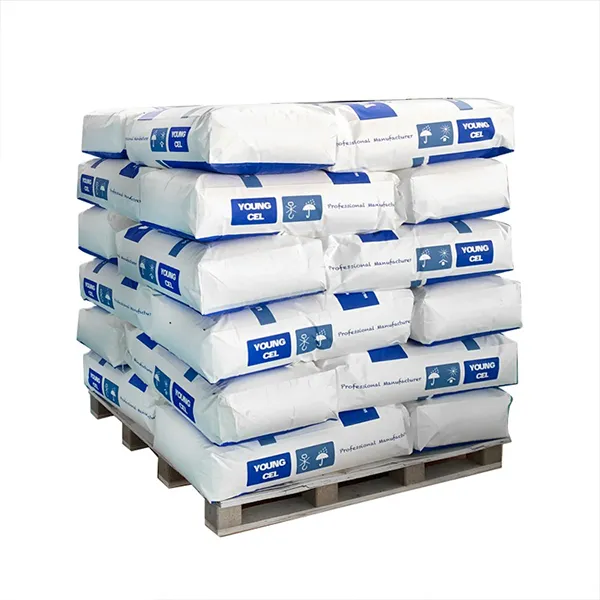The Role of Cellulose and Hydroxypropyl Methylcellulose (HPMC) in Modern Applications
Cellulose is one of the most abundant organic polymers found in nature, serving as a fundamental component of the cell walls of plants. It is a polysaccharide, meaning it consists of long chains of glucose units linked together. This structural polysaccharide provides rigidity and strength to plants, enabling them to maintain their shape and withstand various environmental pressures. With the rising interest in sustainability and eco-friendly materials, cellulose has gained attention for its versatility and numerous applications across various industries.
One of the derivatives of cellulose that has garnered significant interest is Hydroxypropyl Methylcellulose (HPMC). HPMC is a semi-synthetic polymer derived from cellulose, achieved by introducing hydroxypropyl and methyl groups into the cellulose chain. This modification allows HPMC to possess a range of unique properties that enhance its usability in various applications.
Properties of HPMC
HPMC is renowned for its exceptional water retention, emulsifying capabilities, and film-forming properties. These unique characteristics make it suitable for a wide variety of applications, particularly in the pharmaceutical, food, and construction industries. One of its notable features is its solubility in both cold and hot water, making it incredibly versatile for formulation purposes.
Additionally, HPMC is non-toxic and biodegradable, aligning perfectly with contemporary trends toward sustainable practices. Its ability to form gels and stabilize emulsions also makes it a favored ingredient in cosmetic formulations, where it aids in achieving the desired texture and consistency.
Applications in Pharmaceuticals
In the pharmaceutical industry, HPMC serves multiple roles. It is often utilized as a binder in tablet formulations, providing the necessary cohesion to the active pharmaceutical ingredients. This ensures that tablets maintain their shape and dissolve effectively in the body once ingested. HPMC is also common in controlled-release formulations, where it helps regulate the release rate of drugs, enhancing therapeutic effectiveness and patient compliance.
Moreover, HPMC is a vital component in the formulation of ophthalmic solutions and topical gels due to its ability to retain moisture and provide a smooth application. Its presence improves the stability and efficacy of various drug delivery systems, making it an indispensable ingredient in modern pharmaceuticals.
celulose hpmc

Role in Food Industry
The food industry also extensively uses HPMC for its gelling, thickening, and stabilizing properties. As a food additive, it is labeled as E464 and is recognized for its ability to improve texture and consistency in various food products, such as sauces, dressings, and dairy products. HPMC is particularly valued in gluten-free formulations, where it can mimic the texture provided by gluten, allowing manufacturers to create products that are both appealing and functional for those with gluten sensitivities.
In addition to its textural benefits, HPMC also exhibits emulsifying properties, facilitating the blending of oil and water phases in food products. This ability to stabilize emulsions contributes to the overall quality and shelf life of many food items, making HPMC an essential component for food technologists.
Construction and Other Industries
Beyond pharmaceuticals and food, HPMC has made significant inroads into the construction industry, specifically in the production of cement-based materials. It enhances the workability of plaster, mortar, and tile adhesives, allowing for smoother application and improved performance. HPMC also provides water retention properties, preventing early drying of the material and ensuring proper curing, which is critical for structural integrity.
Other industries leveraging HPMC include cosmetics, where it is used in lotions, creams, and shampoos to improve texture and stability, and in personal care products, where it enhances the overall consumer experience through smooth application and moisture retention.
Conclusion
In summary, cellulose and its derivative, Hydroxypropyl Methylcellulose (HPMC), play a crucial role in modern applications across various industries. Their versatility, non-toxic nature, and favorable properties make them invaluable for pharmaceuticals, food products, construction materials, and cosmetics. As the demand for sustainable and eco-friendly materials continues to grow, the importance of cellulose and HPMC is expected to expand, opening new avenues for research and innovation. By harnessing the potential of these natural polymers, industries can move toward more sustainable practices while meeting the evolving needs of consumers worldwide.
-
Rdp that The Revolutionary Polymer Powder Transforming Modern Construction MaterialsNewsAug.11,2025
-
Hpmc Powder that Versatile Additive for Detergents and Personal CareNewsAug.11,2025
-
Hpmc Hydroxypropyl Methylcellulose that Essential Building Material Additive from Shijiazhuang Gaocheng YongfengNewsAug.11,2025
-
Hydroxypropyl Methyl Cellulos Hpmc that Essential for Construction ApplicationsNewsAug.11,2025
-
Mhec Powder that Revolutionizing Construction Chemistry with Cellulose Ether SolutionsNewsAug.11,2025
-
Industri Hpmc that The Global Backbone of Advanced ConstructionNewsAug.11,2025




